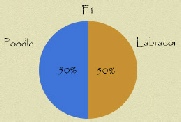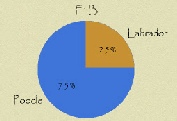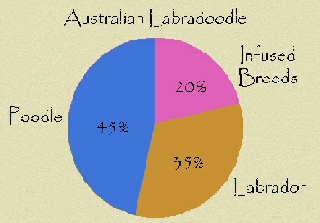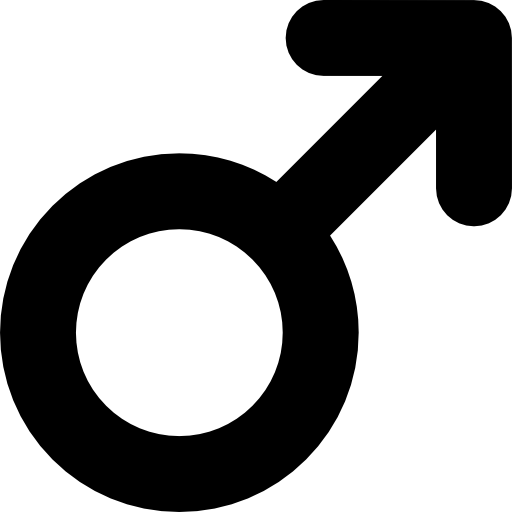History
In the early 1970s, a study was started in Australia by the Australian Blind Organization with the aim of breeding a perfect guide dog for the blind. They started there with the Labrador and the Standard Poodle.
The first dogs were great. Not only were they very smart and easy to train, some had a coat that didn't shed, didn't smell like dogs and didn't cause allergies.
Rutland Manor Labradoodles, and Tegan Park have continued where others left off, of course it took quite some time to get to the final ALD. They have set up an entire breeding program since 1980.
This ultimately resulted in a dog that is 98% hypo allergenic, smells much less like a dog than any other breed, the breed is also super smart and therefore easy to train.
A great solution for most people with asthma, COPD, or a dog allergy who still want or need a (assistance) dog.
At the moment, the ALD is a very smart breed and suitable as a house dog, but also as an assistance dog for various purposes.
Below you can see the difference between a regular labradoodle and the Australian labradoodle.
They are mainly Poodle and Labrador with the 4 other breeds by English Cocker Spaniel, American Cocker Spaniel, Irish Water Spaniel, Curly Coated Retriever being included in small numbers
done (you speak of infusion)
Breeding schedule Australian Labradoodle
The Australian labradoodle is a popular dog. Not without reason, it is a real family dog: social, intelligent, sporty and very trainable. Add to that that it does not shed and can be kept
by people with a dog allergy and you have a unique dog. Before you buy, it is important to know that there are different types of labradoodles.
The Australian Labradoodle is a pricey dog and unfortunately that attracts breeders who cross Labradors and Poodles themselves and call them labradoodles. The Australian Labradoodle is not yet a recognized breed and the
name is therefore still free to use by everyone. Unfortunately, this creates different kinds of labradoodles. Compare it to shepherds. There are German Shepherds, Dutch Shepherds, Malinois etc. All shepherds,
yet very different dogs. It's the same with labradoodles, let's call them Australian labradoodles and "regular" labradoodles for convenience.
How do you recognize a "regular" labradoodle?
- They are often offered via Marktplaats and other advertising sites.
- There is often no waiting list for this.
- Father and/or mother is a Labrador and/or a Poodle. (or grandfather/grandmother or great-grandfather/great-grandmother)
- No Australian Labradoodles in the pedigree (always ask for them!).
- The price is often half or more lower.
We are not saying that these "normal" crossings are not good and that there is something wrong with them, on the contrary. They can just as well be very sweet, social dogs and there is also a chance that they do not shed.
The emphasis here is on opportunity and ability. Because therein lies the difference. There is a chance that they will molt anyway, and there is a chance that the character will eventually turn out to be just that little bit different. It's no fun
to have to rehome a dog after a year because you still get an allergic reaction, or that the dog turns out to be just a bit more dominant than the average Australian labradoodle. You have the right to this information so that
you can make a good decision. If allergies are not an issue, and you get along well with dogs so that you can keep the dog in check, then a "regular" labradoodle will suffice. If you are allergic, the below described
information of interest to you.
Differences "regular" and the Australian labradoodle
Here we give you the official breeding schedule of the Australian labradoodle and indicate where the "regular" labradoodle stops and the Australian labradoodle continues in development. The first time you read this you may
dizzy because of the different codings, the 2nd time it will soon become clear that the differences between the labradoodles are large. It is a technical story but completely in accordance with the guidelines of the Australian
Labradoodle Association.
Definitions:
| AL | Australian Labradoodle |
|---|
| ALF | Australian Labradoodle Foundation Dog -> Precursor Species |
|---|
| ALF0 | Australian Labradoodle Basic Breeding Dogs |
|---|
| LO | Labrador x Poodle cross (also referred to as F1/F1B/F2 labradoodle) |
|---|
| S | Cocker Spaniel x Poodle (also called Spoodle) mix |
|---|
Basic dogs:
| L | Labrador |
|---|
| P | Poodle |
|---|
| C | Cocker Spaniel |
|---|

Now that we know the codes, we can start crossing. Naturally, rules have been drawn up for this.
We will discuss and explain these here:
| LO1 | Labrador x Poodle cross (also called F1 labradoodle) |
|---|
| LO1 x LO1 | gives a LO2 (also called F2 by "regular" breeders) |
|---|
| LO2 x LO2 | gives a LO3 |
|---|
| LO1 x Poodle | gives a LO2 (this cross is also called F1B by "regular" breeders) |
|---|
etc.

| ALF1 | First generation labradoodle |
|---|
| ALF1 x ALF1 | gives an ALF2 |
|---|
| ALF2 x ALF2 | gives an ALF3 |
|---|
| ALF3 x ALF3 | gives a pure AL -> Australian Labradoodle (pure bred as it is called) |
|---|
ALF1 to ALF3 are also called Multigen Labradoodles.
From ALF4 (4th generation) the name is Australian labradoodle (pure Australian Labradoodle)

A LO promotes to ALF1 only when crossed with an AL or ALF (it doesn't matter which generation)
or with a Cocker Spaniel or with a Spoodle. So:
| LO1 x ALF3 | = ALF1 |
|---|
| LO3 x ALF2 | = ALF1 |
|---|
| LO2p x C | = ALF1 |
|---|
| LO2 x S | = ALF1 |
|---|
etc.
If such a cross has a hair losing coat then it will be an ALF0. A puppy from an ALF0 can only become an ALF1 if the other parent is a no-hair-losing ALF1, or a Poodle or an AL. the "ordinary"
labradoodle often does not get beyond the LO status, also because these breeders often do not have an ALF or AL.
If you cross an LO1 with an LO1 (result LO2 also called F2) then 40% of the puppies often have the genetic characteristics of a poodle (so they are just poodles), 40% have the genetic characteristics of a labrador
(so they are just labradors), the remaining 20% have the properties that can provide the basis for a labradoodle. Only these 20% are possibly suitable for further breeding in order to achieve an AL. Or here
really taken into account, we dare to doubt.
Again, we don't want to criticize these "regular" labradoodles, on the contrary. We only aim to explain the differences because for many people all labradoodles are lumped together and that is very wrong.
ALF dogs are not yet fully-fledged Australian labradoodles, after all, 3 successive generation ALF crosses still have to precede this.
Summarized:
- The "regular" labradoodle is a cross between a labrador and a poodle.
- A first Multigen labradoodle is a cross between a ''normal'' labradoodle and a Multigen or an Australian labradoodle.
- Other multigen labradoodles are 1st, 2nd or 3rd generations labradoodles, these also have a high degree of allergy friendliness.
- The 4th consecutive generation of a Multigen labradoodle is only called an Australian Labradoodle.
- As soon as another poodle is crossed in, one starts again as the first generation multigene, and one does not continue as an Australian labradoodle.
When is the above information important?
Until AL status you run the risk of a hair-losing coat, different character or other genetic abnormalities. If you are allergic to dogs, you run a risk if you buy a LO or a first ALF cross.
Even if you purchase the dog because of its social, highly sensitive character, it may not correspond to your expectations. This can be important if, for example, you have a child with an autistic disorder or other abnormality
has. If you are just looking for a nice dog, then these tips on how to recognize a good dog breeder will suffice. We would like to add to this that you should always request the family tree of the parents, so that you can see what kind of
dogs are in the bloodlines and draw your conclusions.
Thanks to
happydoodles of which I was allowed to use a large part of the text..
 Our Dogs
Our Dogs
 Female
Female
 Male
Male
 Puppies
Puppies

 Dutch
Dutch
 Now that we know the codes, we can start crossing. Naturally, rules have been drawn up for this.
Now that we know the codes, we can start crossing. Naturally, rules have been drawn up for this.
 A LO promotes to ALF1 only when crossed with an AL or ALF (it doesn't matter which generation)
A LO promotes to ALF1 only when crossed with an AL or ALF (it doesn't matter which generation) Studio DeGoede © - Febr 2021 v1.6
Studio DeGoede © - Febr 2021 v1.6